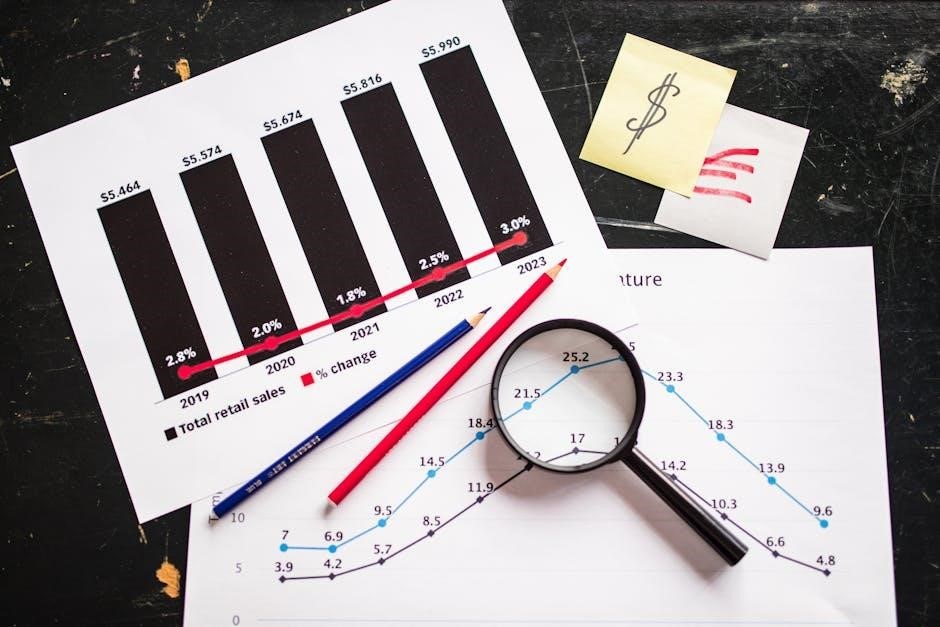
What is the Glycemic Index (GI)?
The Glycemic Index (GI) is a ranking system for carbohydrates based on their immediate effect on blood sugar levels after consumption. It measures how quickly a food raises blood glucose levels, using a scale from 0 to 100. Pure glucose has a GI of 100, serving as the standard.

Understanding Glycemic Load (GL)
Glycemic Load (GL) provides a more complete picture than GI alone. GL considers both the quality (GI) and quantity of carbohydrates in a serving of food. It’s calculated as: (GI x grams of carbohydrate) / 100. A GL of 10 or less is low, 11-19 is medium, and 20 or more is high.
Calculating Glycemic Load
Calculating Glycemic Load (GL) is a straightforward process that offers a more practical understanding of a food’s impact on blood sugar than Glycemic Index (GI) alone. GL takes into account both the GI value of a food and the amount of carbohydrate it contains in a typical serving. To calculate GL, you’ll need two pieces of information: the food’s GI value and the grams of available carbohydrate per serving.
The formula for calculating GL is as follows: GL = (GI x grams of carbohydrate per serving) / 100. Let’s illustrate this with an example. Consider raw carrots, which have a GI of 71. A cup of raw carrots contains approximately 8 grams of available carbohydrates. Using the formula, we calculate the GL as (71 x 8) / 100 = 5.68. This result is often rounded to 5.7.
Once you’ve calculated the GL, you can interpret its significance. A GL of 10 or less is considered low, indicating a minimal impact on blood sugar. A GL between 11 and 19 is medium, suggesting a moderate effect. A GL of 20 or more is high, implying a significant rise in blood sugar levels.

Importance of Printable GI Charts
Printable Glycemic Index (GI) charts serve as invaluable tools for individuals aiming to manage their blood sugar levels, make informed dietary choices, and promote overall health. These charts offer a readily accessible reference point, enabling users to quickly assess the impact of various foods on their glycemic response.
For individuals with diabetes or insulin resistance, printable GI charts are particularly crucial. By providing a clear categorization of foods based on their GI values, these charts empower individuals to select foods that cause a slower and more gradual rise in blood sugar, thereby aiding in blood glucose control. This can help prevent drastic spikes and dips in blood sugar levels, which are detrimental to long-term health.
Moreover, printable GI charts are not only beneficial for those with specific health conditions but also for anyone seeking to adopt a healthier lifestyle. By understanding the GI values of different foods, individuals can make more informed decisions about their carbohydrate intake, promoting weight management, improved energy levels, and reduced risk of chronic diseases.

GI Chart Categories
GI charts categorize foods into three main groups based on their glycemic index values: low (55 or less), medium (56-69), and high (70 or more). These categories help individuals understand how different foods affect blood sugar levels.
Low GI Foods (55 or Less)
Foods with a glycemic index of 55 or less are considered low GI and are generally recommended as part of a healthy diet, especially for individuals managing blood sugar levels. These foods are digested and absorbed more slowly, leading to a gradual rise in blood glucose and insulin levels. This can help improve blood sugar control, increase satiety, and reduce the risk of chronic diseases.
Examples of low GI foods include most non-starchy vegetables, some fruits (like berries, apples, and pears), legumes (such as lentils, chickpeas, and beans), nuts, seeds, and whole grains like quinoa and barley. Dairy products like yogurt and milk also tend to have a low GI.
Incorporating more low GI foods into your diet can lead to better energy levels, improved weight management, and a reduced risk of developing type 2 diabetes and heart disease. When using a printable GI chart, prioritize these foods for the majority of your meals and snacks. Always consider portion sizes, as even low GI foods can impact blood sugar if consumed in excess.
Medium GI Foods (56-69)
Foods that fall within the glycemic index range of 56 to 69 are categorized as medium GI foods. These foods have a moderate impact on blood sugar levels, causing a more rapid increase compared to low GI foods, but not as drastic as high GI foods. Including medium GI foods in your diet requires careful consideration of portion sizes and meal composition.
Common examples of medium GI foods include whole wheat bread, brown rice, some fruits like bananas and oranges, sweet potatoes, and certain breakfast cereals. The processing and preparation methods can also influence a food’s GI; for instance, white rice that is slightly undercooked might have a medium GI value.
When using a printable GI chart, it’s advisable to consume medium GI foods in moderation. Pairing them with sources of protein, healthy fats, and fiber can help slow down the absorption of glucose and minimize blood sugar spikes. Individuals with diabetes should monitor their blood glucose levels closely after consuming medium GI foods to understand their individual response.
High GI Foods (70 or More)
Foods with a Glycemic Index (GI) of 70 or higher are considered high GI foods. These foods are rapidly digested and absorbed, leading to a quick and significant rise in blood sugar levels. Frequent consumption of high GI foods can contribute to insulin resistance, weight gain, and increased risk of type 2 diabetes.
Examples of high GI foods include white bread, white rice, potatoes (especially baked or mashed), sugary drinks, processed cereals, and certain snack foods. These foods are often refined and lack fiber, which would otherwise slow down glucose absorption. The form and preparation of the food also play a role; for example, instant oatmeal tends to have a higher GI than steel-cut oats.
When using a printable GI chart, it is generally recommended to limit the consumption of high GI foods, especially for individuals with diabetes or those aiming to manage their weight. If you do consume high GI foods, consider pairing them with protein, fat, and fiber to mitigate the impact on blood sugar levels. Monitoring blood glucose levels after consumption is also advisable to understand your body’s response.

How to Use a Printable GI Chart
A printable Glycemic Index (GI) chart is a practical tool for making informed food choices. Start by identifying the foods you commonly consume and locate them on the chart. Note their GI values, which will be categorized as low (55 or less), medium (56-69), or high (70 or more). This categorization helps you understand how quickly these foods raise your blood sugar levels.
Prioritize incorporating more low GI foods into your diet. These foods release glucose slowly, promoting stable blood sugar levels and sustained energy. Medium GI foods can be consumed in moderation, while high GI foods should be limited, especially if you have diabetes or are managing your weight.
Consider the portion size of foods. The GI only indicates the rate of glucose release, not the amount. Combine high GI foods with protein, healthy fats, and fiber to slow down digestion and reduce the overall glycemic impact of the meal. Use the chart as a reference when meal planning and grocery shopping to make healthier choices. Remember, individual responses to foods can vary, so monitor your blood sugar levels if necessary.
Where to Find Printable GI Charts in PDF Format
Locating printable Glycemic Index (GI) charts in PDF format is quite simple, thanks to the abundance of online resources. A good starting point is a general internet search using keywords like “printable glycemic index chart PDF.” This will yield numerous results from reputable health organizations, medical websites, and educational institutions. Many of these sites offer downloadable PDF charts for free.
Government health agencies, such as the National Institutes of Health (NIH) or the World Health Organization (WHO), often provide reliable GI charts. University websites, particularly those with nutrition or dietetics departments, are another excellent source. Additionally, diabetes associations and foundations frequently offer GI charts as part of their educational materials.
Before downloading, ensure the chart is from a trustworthy source and includes a comprehensive list of foods with their corresponding GI values. Look for charts that are clearly organized and easy to read. Once downloaded, the PDF format allows for easy printing and convenient reference whenever you need to make informed food choices.
